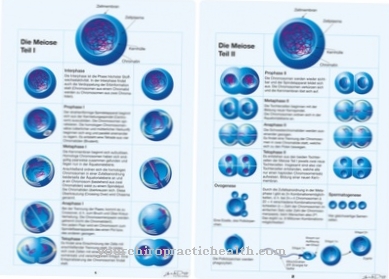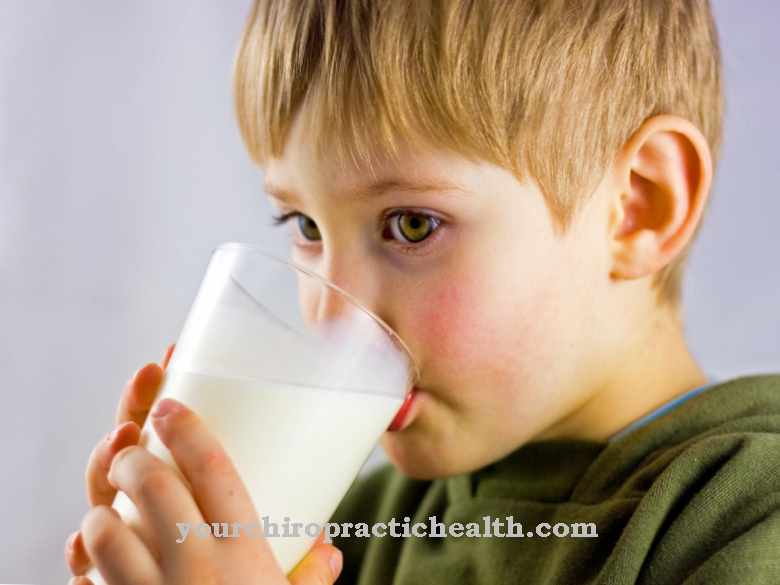With Adduction are movements of a body part that are directed towards the center of the body (spreading). Adduction occurs in 4 joints in the human body: in the hip joint, in the shoulder joint, in the metacarpophalangeal joints and in the thumb saddle joint.
What is adduction?

The term is defined in the descriptive anatomy using the plane-axis system. There movements are determined based on the so-called zero position. This is defined for all joints by the upright position with arms hanging down.
Basically, adduction describes the movement of body parts to the body, for example the application of a previously splayed arm.
Function & task
The adduction movement has an analytical meaning for doctors or physiotherapists. Since the movement is defined with the amplitude, it can be tested and documented in the event of movement disorders whether there is a restriction in the function. In this way strength and agility are examined. The tests are repeated at regular intervals to check whether medical or other therapies have produced an improvement or not. Depending on the result, the further procedure must be modified.
The best known are the adductors of the thigh, which pull the leg inward over the hip joint. These are five muscles that all come from the pubic bone, pull themselves over the hip joint and attach to the inside of the thigh bone or the inside of the tibia.
In addition to adduction, these muscles are also involved in other movements. Especially in flexion and external rotation. This combination of the three types of movement is often used in everyday life and in sports. When walking and running in the swing leg phase and for example when playing soccer when playing the ball with the inside of the foot.
In the shoulder joint, the strongest adductors are the large pectoral muscle (pectoralis major muscle) and the broad back muscle (latissimus dorsi muscle). As in the hip joint, they combine adduction with other movements for functional movement sequences. The pectoralis pulls the arm forward and down from a raised position, an activity that occurs during many throwing movements and other sporting activities. In volleyball, for example, when punching, in handball when throwing and when swimming, especially with the butterfly in the first phase of movement after immersion. The latissimus pulls the arm back and down, which occurs, for example, with pull-ups and with all swimming styles.
The adductors of the fingers are on the inside of the fingers and pull fingers 2, 4 and 5 towards the middle finger in a pure adduction movement. This function always occurs when we grab something.
Thumb adduction is actually a movement that does not function functionally. The executing muscle, the adductor pollicis muscle, is involved in combination movements that bring the thumb to the other fingers, for example when grasping with the fingertips or the whole hand.
You can find your medication here
➔ Medicines for muscle weaknessIllnesses & ailments
The most common adduction dysfunction affects an injury in the muscle, very often the adductors of the hip. Adductor strains or torn muscle fibers in this area are very common in sports. A strain, torn muscle fiber or torn muscle differ only in their severity. Accordingly, the symptoms are similar, but of different intensity, which means that the healing phase is different in time. These injuries are always associated with pain and loss of function. The body switches to protection so as not to further irritate the focus of the injury. For those affected, there is a more or less long rest phase in the affected area, with subsequent therapy and slow build-up of stress.
As with other muscles, the adductors can also be affected by irritation in the area of the insertion tendons (insertion tendinopathy). This form of irritation is a typical overload syndrome and more often affects two or more jointed muscles; in the hip joint the gracilis muscle, which extends over the knee joint and in the shoulder joint the two have already been named. The result is pain when the affected muscles are tensed and stretched. The therapy is similar to that for strains, but you should always research the cause of the overload in order to be able to minimize it in the long term. The tendons of origin of the hip adductors also show more frequent inflammatory reactions of this type. Because of the localization, this is called pubic bone inflammation.
Like all other movements, adduction is also affected if the associated joint has osteoarthritis. This wear and tear disease gradually leads to joint pain, a loss of strength and restricted mobility. The reduction in strength and mobility primarily affects the movements that are carried out against gravity during everyday stresses. Therefore adduction is only affected at an advanced stage. For the sick, this has consequences for walking in the hip joint. In the shoulder joint, all movements are carried out with weight bearing in the direction of the center of the body like eating and drinking, are affected.













.jpg)

.jpg)
.jpg)











.jpg)